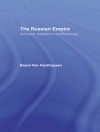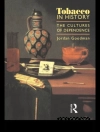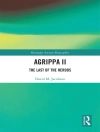Through its focus on audiences and their reception of media in Nazi Germany, Audiences of Nazism inverts the typical top-down perspective employed in studies that concentrate on the regime’s regulation of media and propaganda. It thereby sheds new light on the complex character of the period’s media, their uses, and the scope for audience interpretation. Contributors investigate how consumers either appropriated or ignored certain messages of Nazi propaganda, and how some even participated in its production. The authors ground their studies on novel historical sources, including private diaries and letters, photographs and films, and concert programs, which demonstrate, amongst other things, how audiences interpreted and responded to regulated news, Nazi Party rallies, and the regime’s denunciation of modern works of art as ‘degenerate.’
Table of Content
List of Figures and Tables
Acknowledgements
Introduction: Media and Their Users in Nazi Germany
Ulrike Weckel
Chapter 1. “To Constantly Swim against the Tide Is Suicide”: The Liberal Press and Its Audience, 1928–1933
Jochen Hung
Chapter 2. Active Audiences: Stürmerkästen and the Rise of Der Stürmer’s Activist Readership
Hannah Ahlheim
Chapter 3. Reading Fake News: The “Röhm Putsch, ”: The Hitler Myth and the Consumption of Political News under the Nazis
Janosch Steuwer
Chapter 4. Beyond Approved Reactions: Assessments of the NSDAP’s Nuremberg Party Rallies in Diaries and Letters, 1933–1938
Annina Hofferberth
Chapter 5. Call and Response: The Creation of the National Socialist Public
Peter Fritzsche
Chapter 6. Advertising and Its Audiences in Weimar and Nazi Germany
Pamela Swett
Chapter 7. Concert Programs, Ideology, and the Search for Subjectivity in National Socialist Germany
Neil Gregor
Chapter 8. The “Entartete Kunst”: Exhibitions and Their Audiences
Bernhard Fulda
Chapter 9. Amateur Films from National Socialist Austria as Visual Responses to Nazi Propaganda
Michaela Scharf
Chapter 10. The Media of Occupation: German Books and Photographs in France, 1940–1944
Julia Torrie
Chapter 11. The Migration of Topoi from Atrocity Films to Their Heirs: Modes of Addressing the Audience in German Post-War Cinema
Bernhard Gross
Chapter 12. Finding an Unintended Audience: An SS Photo Album and Its Post-War Editions
Ulrike Koppermann
Afterword
Jane Caplan
About the author
Ulrike Weckel is Professor of History in the Media and the Public at the Justus Liebig University Giessen. Her research interests include postwar dealings with Germany’s Nazi past, gender history, media history, and audience reception. She is the author of Beschämende Bilder. Deutsche Reaktionen auf alliierte Dokumentarfilme über befreite Konzentrationslager (Stuttgart 2012) and has analyzed audience responses to representations of the Nazi past in various feature films and radio and theater plays.












